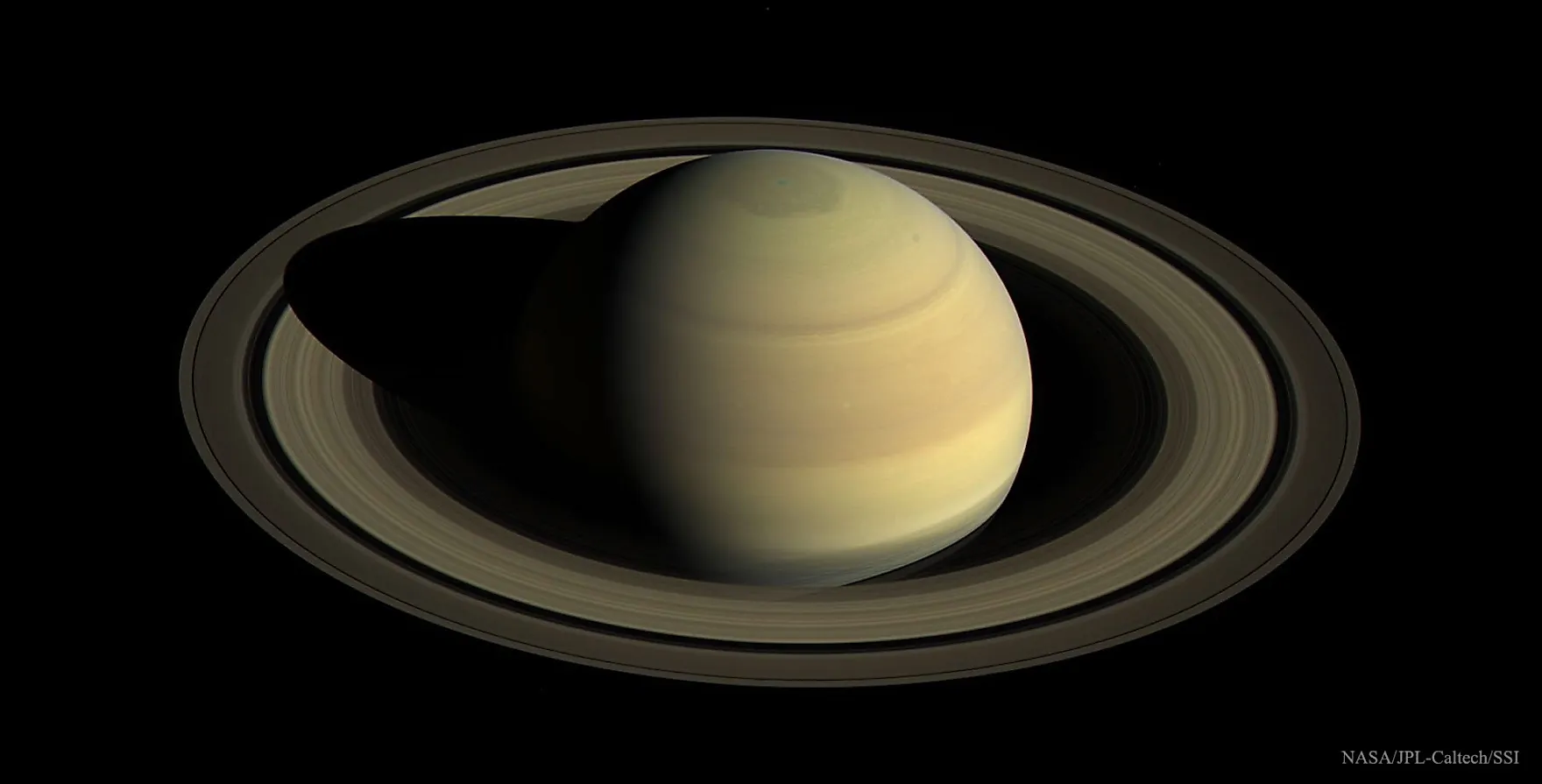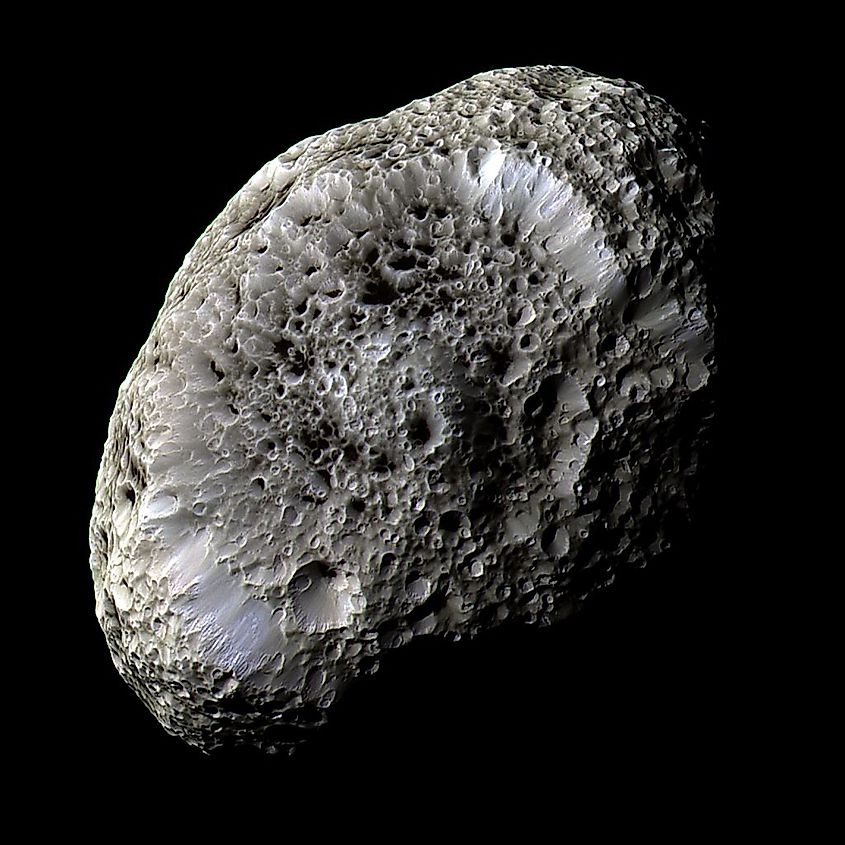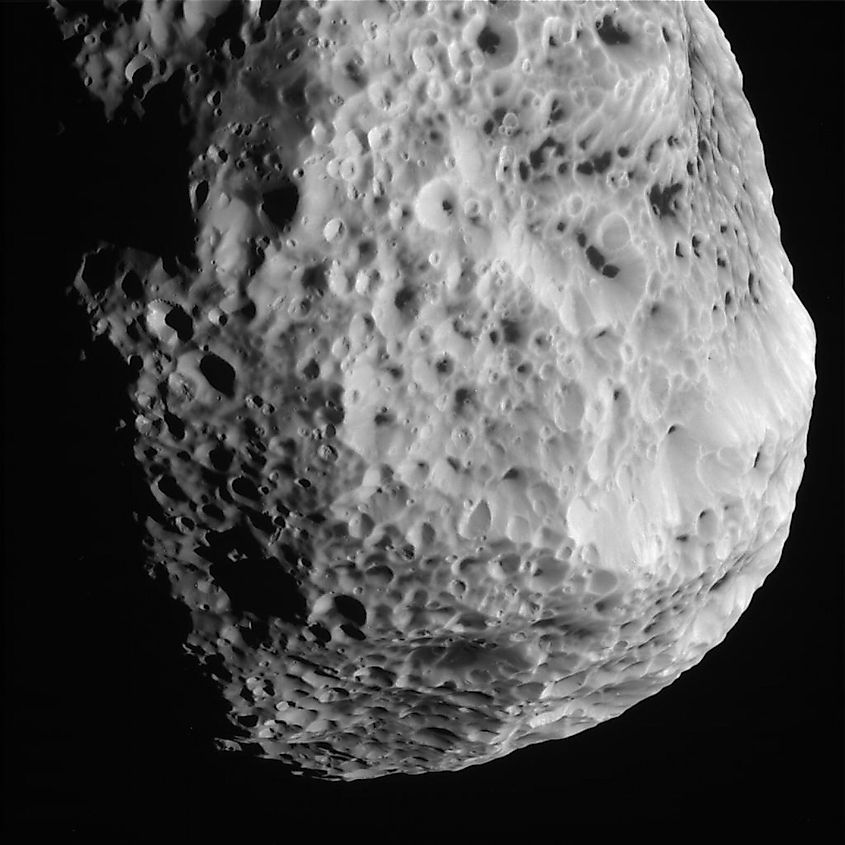
Saturn’s Moon Hyperion
Saturn is home to one of the largest, most diverse moon systems in the solar system. Nearly every moon orbiting Saturn has its own set of unique features, from the methane seas of Titan to the geysers of Enceladus, yet there is one particular moon that looks more unique than perhaps any other moon in the solar system. Called Hyperion, it has also been called the “Sponge Moon” due to its porous, sponge-like appearance.
Size, Orbit, And Rotation

Hyperion is a small moon, having a diameter of only 168 miles (270 kilometres). Hyperion is so small that its gravity is unable to pull the moon into a spherical shape. Hyperion orbits Saturn at an average distance of 933,000 miles (1,500,000 kilometers), and it takes the moon roughly 21 days to orbit Saturn. Hyperion takes roughly 13 days to rotate once, yet this is actually a rough estimate since the moon has a fairly odd rotation. Unlike most objects in the solar system, Hyperion has what’s called chaotic rotation. Rather than simply spin, Hyperion is tumbling around Saturn. In fact, its rotation is so chaotic that it is extremely difficult to accurately predict the moon’s orientation in space.
Surface Features And Composition

Like most of the moons in the outer solar system, the dominating surface features on Hyperion are impact craters. The largest impact crater on Hyperion is 76 miles (122 kilometres) in diameter, which is roughly 45% of the moon’s total diameter. The sheer number of impact craters on Hyperion have given it its signature sponge-like appearance. However, other moons that have as many or more impact craters look nothing like Hyperion, so why does this particular moon look so strange? The most likely reason has to do with the fact that Hyperion has a very low density. In fact, about 40% of Hyperion’s interior is empty space, and 46% of the moon’s surface is porous. The low density of Hyperion means that, when an impact occurs, the crater sinks into the surface to a much larger extent than most other worlds. This causes the impact craters to become much deeper than they otherwise would be. Like most of Saturn’s moons, Hyperion is made up mostly of ice and rock. Most of Hyperion is composed of water ice, which explains why the moon has such a low density.
Possible Formation
Hyperion is not only unique because of its sponge-like shape and rotation. Hyperion may have also formed in a rather untraditional way compared to most other moons. Hyperion may have once been part of a larger moon. This large moon was likely impacted by another large object, possibly shattering the two objects. The debris from the impact eventually coalesced to form another, much smaller moon. That small moon became Hyperion.











